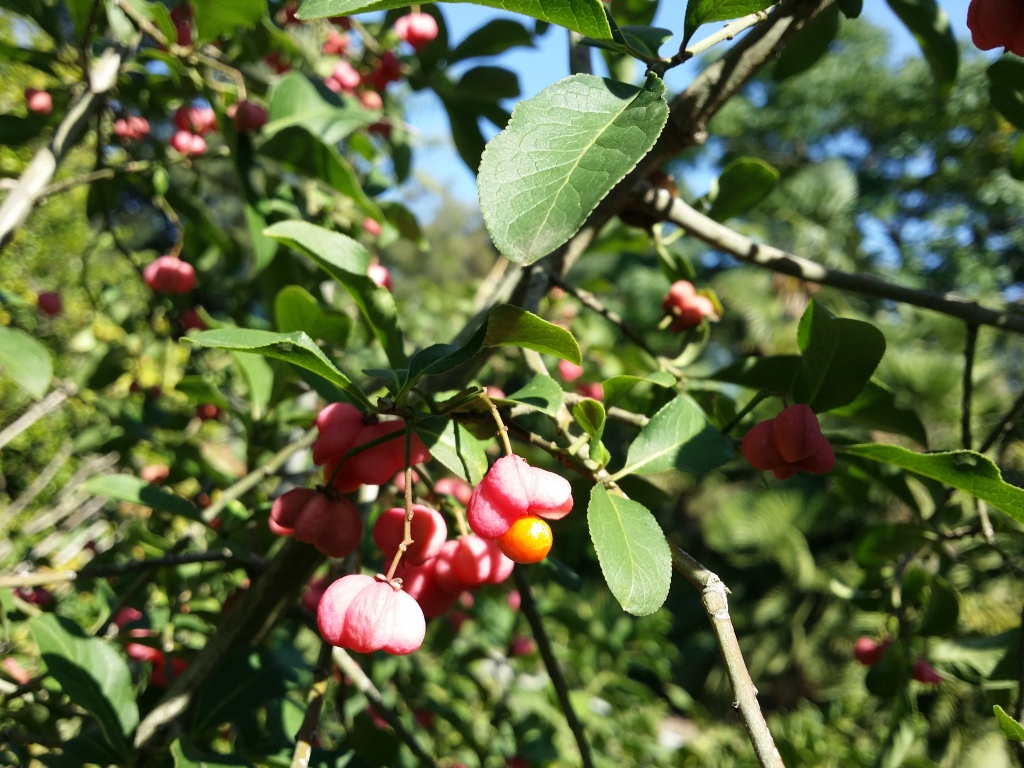Euonymus europaeus
L.Deciduous (perhaps incompletely in Victoria) shrub or small tree 2–6 m high, usually much-branched. Bud scales broadly ovate to obovate, 2–3 mm long with a short, dark apical mucro. Leaves opposite, ovate to lanceolate or elliptic, 2–10 cm long, 1–3.5 cm wide, glabrous; apex acute to acuminate; margins finely crenate to serrate; petiole 3–-8 mm long. Inflorescences c. 2–4 cm long, 3–10-flowered. Flowers mostly 4-merous; sepals broad-elliptic, c. 1 mm long, greenish, glabrous; petals obovate to spathulate, 3–4 mm long, cream or white; stamens shorter than petals, inserted on the raised green disc; ovary prominent, style 1–2 mm long. Capsule 7–10 mm long, 10–15 mm wide, deeply 4-lobed (some locules sometimes undeveloped), pink to crimson; seeds ellipsoid, 7–9 mm long, entirely covered by the thin, fleshy orange aril. Flowers Sep.–Nov. Fruits Apr.–Aug.
GleP, VRiv, GipP, HSF, OtR. Also naturalised SA. Native through much of Europe. Widely grown for the ornamental fruits and naturalised to some extent in moist sites near e.g. Portland, Euroa, Wangaratta and Heyfield.
Seeds are dispersed by birds attracted to the bright arils.
 Spinning
Spinning


